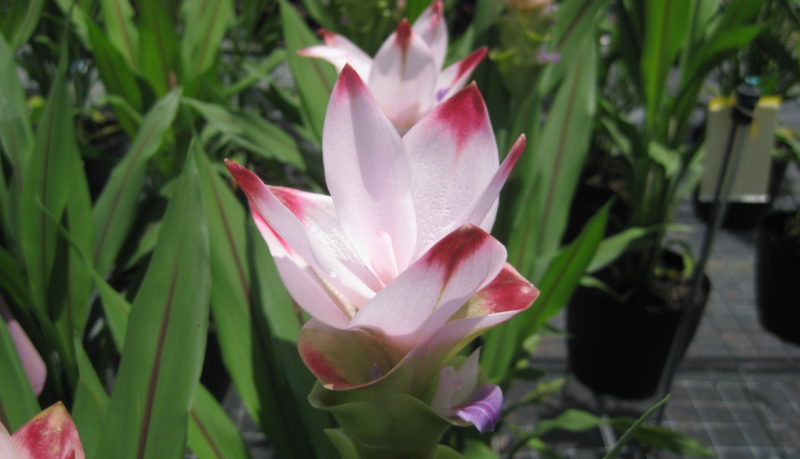
Let’s Talk Ginger
When I think of ginger, the first things that come to mind are those wonderful ginger products that we eat and drink. This is only a small section of the Zingiberaceae family, with many ornamental varieties available for our industry. These have been produced predominantly in Southern areas, but are starting
to have a wider acceptance by the Northern producers. They make great season extenders once annual sales start to drop off.
ALPINIA — SHELL GINGERS
Alpinia zerumbet ‘Variegata’, also known as Variegated Ginger is a very attractive ginger with yellow and green variegated leaves. It can be produced by division, but the best method is to start with TC material for strong growth and
variegation. They can be produced in full sun but the best coloration to the leaves will come from production in 50 percent shade. With high light and temperatures, the leaves can tend to curl in the heat of the day.
From a 72-cell tissue culture liner, a 6-inch pot can be produced in roughly five to six months. This crop time can be reduced by working with a larger liner to start off with. Production temperatures need to be maintained above 60° F, preferring 70° F for optimal growth.
ALPINIA PURPURATA — MINI GINGER
As opposed to the variegated above, these have green leaves and are produced for the value of their flower. They come in both a red and a pink variety. Typically, these are sold as a clump of six rooted sprouts together.
Planted in a 6-inch pot, these can be produced in four to five months. They will produce best under full sun but can be grown in partial shade. Pot size will regulate the size of this plant. These also need to be maintained above 60° F. Flowering will not occur until the minimum temperature stays above 70° F.
CURCUMA — SIAM TULIP AND TORCH CURCUMA
My favorite of all the gingers are the curcuma. There are two main types of these available for our industry, the Siam Tulip (Curcuma alismatifolia) and the Torch
Curcuma. Both of these originate from Thailand. Typically used as a potted crop, they can also be used in the ground as well as for cut flowers. The flowers can last up to a month after being cut.
Siam Tulip. Typically, the Siam Tulip curcuma are produced from tissue culture. The main breeding company on these is KP Holland out of The Netherlands. The plants range from 22 to 30 inches tall at their finished height, so there are varieties available for pot sizes from 6 up to 10 inches. Depending on the pot size and the variety, the grow time on these ranges from nine to 16 weeks.
Like the other gingers, they also require warmth to do well. They need a minimum of 60° F night temperature but will do best above 70° F. They are usually produced under 30 percent shade but, if acclimated, can thrive in a full sun environment if planted in the ground. They will produce a rhizome as they grow which can be dug and stored over the winter and replanted the following year. They are hardy in Zones 8 to 10. Although they can be produced from bulbs, the speed and consistency of development is far better when started from tissue
culture. You can expect to have flowers from June through August; in Zones 8 to 10 they will go dormant from November through May. To help in allowing northern growers also produce these, they can be acquired in a 32-cell liner
with two plants per liner. This will allow the warmth and light to be built into the plants, saving time and heat required to finish in cooler environments.
Torch Curcuma. Unlike the Siam Tulip, the Torch Curcuma is produced from a rhizome instead of tissue culture. The flowers resemble more of a cone shape then the tulip shape of the previous. They also can be utilized as cut flowers, with the blooms lasting up to a month. In general, the leaves are much wider than on the Siam Tulip. They are also hardy to Zone 8 and will go dormant and overwinter in these environments. They are also a bit taller than the Siam Tulips, reaching a height of 36 inches.
They need a minimum of 60° F night temperature but will do best above 70° F. These will need to be maintained in partial shade, as full sun will burn their leaves. As with the Siam Tulips, the rhizomes can be dug up and stored for the winter to be planted again the following spring.
CONCLUSION
So the next time you are drinking a ginger ale or nibbling on some ginger candy, think about all the other wonderful things that you can do with the ginger family. They are truly a group of interesting and beautiful tropical plants, sure to make a great impact for your customers as well!


 Video Library
Video Library 




















